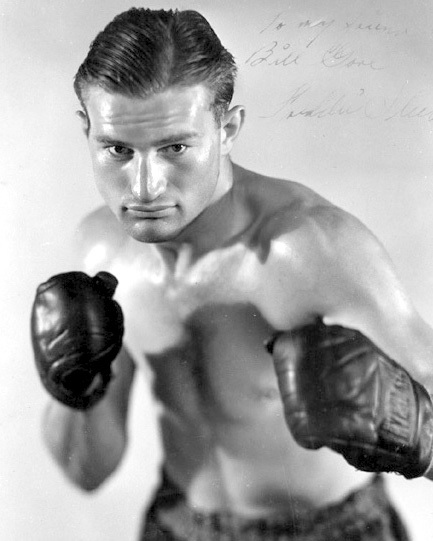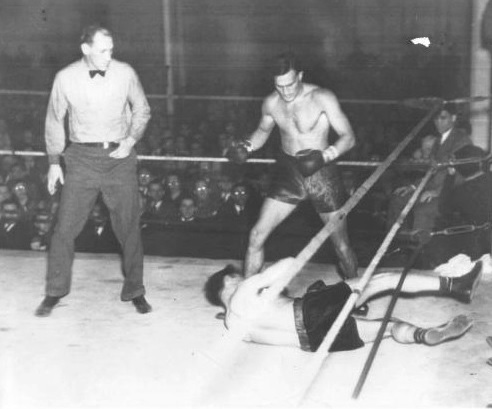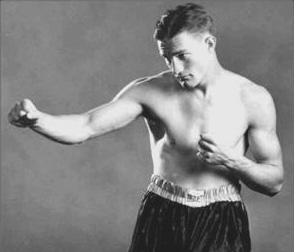|
McCallum (1975 p 151)
described him, “… chisel-chinned, handsome, was a beautiful thing to see
in boxing trunks. Ducking, weaving, moving all the time. Smothering
punches with flurries of punches. Hitting with blinding speed. Landing
four or five times for one. Blotting out the attack with counterattack.
He could Fancy Dan with the best, and blast your head off with either
hand.”
Steele was a sizzling
puncher, bouncy on his feet and an extremely dangerous hitter, who
posted a record of
123-5-11 with
58 knockouts/stoppages in his nearly fifteen-year ring career. He
also had
one “no contest” bout.
Thirty-one displays of his sensational punching and early exits
came during the first two rounds. During his prime years, he lost only
two times. Of his
five career losses,
three came during his last
six contests; he lost his final
two matches.
Among his victims were
Ceferino Garcia (two times),
William “Gorilla” Jones (two times),
Fred Apostoli,
Vince Dundee,
Ken Overlin,
Solly Krieger,
Gus Lesnevich,
“Baby” Joe Gans,
Eddie “Babe” Risko (three times),
Joe Glick (two times),
Frank Battaglia,
Carmen Barth,
Eddie Ran,
Paul Pirrone,
Joe Cardoza,
Sammy O’Dell,
Mike Payan (two times),
Andy Divodi (two times),
Eddie Murdock,
Johnny “Bandit” Romero,
Allen Matthews,
Ralph Chong,
Jackie Aldare,
Swede Berglund,
Leslie “Wildcat” Carter,
Battling Dozier,
Young Stuhley (four times),
Tommy Herman,
Frankie Stetson,
Billy Townsend,
Babe Marino,
Al Gracio (two times),
Don Fraser,
Jimmy Britt and
Tony Portillo (two times). He also fought a draw with
William “Gorilla” Jones. (Author’s Comment: Steele defeated seven
men who held the world title during his career. He always claimed he was
at his best against Vince Dundee in 1935.)
Walsh (1993 pp 114-115)
stated, “Freddie Steele was perhaps the best American middleweight of
the 1930s. A gutsy and talented Irish-American, he overcame appalling
luck to win the title.” Freddie worked his way through some unfortunate
occurrences such as his father leaving the family when he was an infant,
serious kidney problems and an automobile wreck in which the vehicle
caught fire, to go on and win the middleweight title.
The Ring (Jun 1936 p 7)
stated, “Freddy Steele, although born in Seattle, is accepted by Tacoma
fans as their own. He is one of the greatest middleweights to come out
of the Northwest. Stepped into the spotlight when he crashed the jaw of
Vince Dundee and knocked him out in three rounds. Most of his knockouts
have been scored in the early rounds.” |


